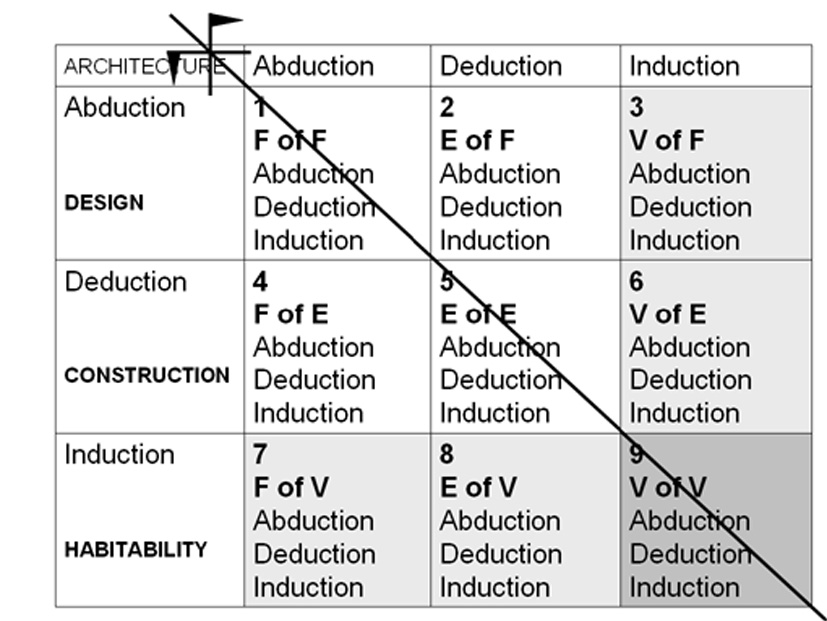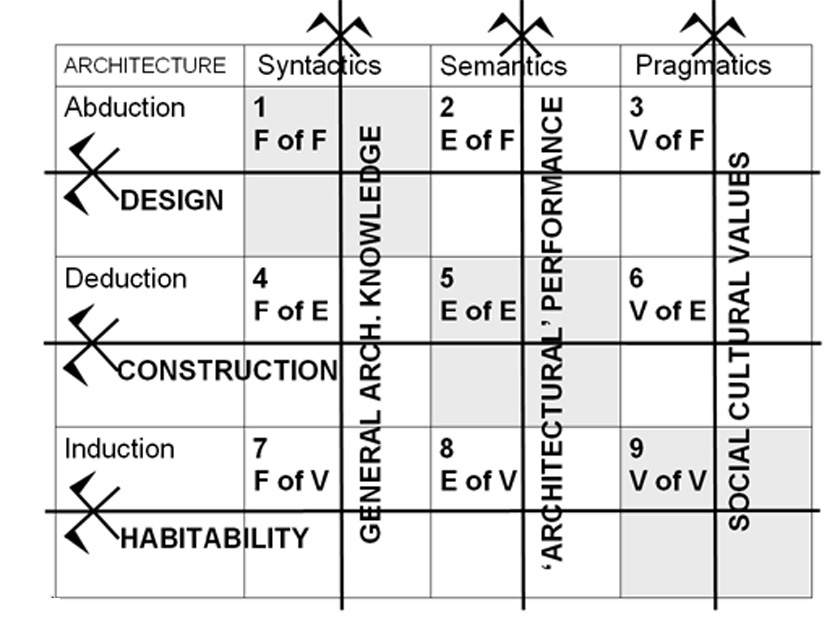CLAUDIO F. GUERRI Name: Claudio F. Guerri, Professor, Architect (b. Rome, Italy, 1947). Department of Morphology and Communication, Faculty of Architecture, Design and Urbanism, University of Buenos Aires, Buenos Aires, Argentina. Home-Address: Olleros 2532 2ºA, (1426) Buenos Aires, Argentina. E-mail: claudioguerri@fibertel.com.ar Fields of interest: Theory of Design; Graphic Languages; Applied, Space and Visual Semiotics; Architectural, Graphic and Industrial Design. Awards: Article of the Year (Best Art Critic Article) AICA Award, 1986; Scientific and Technological Production Award, SICyT-University of Buenos Aires, 1995. Publications: Architectural design, and space semiotics in Argentina, In: Sebeok, T. A. and Umiker-Sebeok, J., eds., The Semiotic Web 1987, Berlin: Mouton, 1988, 389-419. Deep structure and design configurations in paintings, In: Nöth, W., ed., Semiotics of the Media: state of the Art, Projects and Perspectives, Berlin: Mouton, 1997, 675-688. Gebaute Zeichen: Die Semiotik der Architektur, In: Wirth, U., ed., Die Welt als Zeichen und Hypothese: Perspektiven des semiotischen Pragmatismus von Charles S. Peirce, Frankfurt: Suhrkamp, 2000, 375-389. El nonágono semiótico: un ícono diagramático y tres niveles de iconicidad, In: Designis Nº 4, [Barcelona: Gedisa], July 2003, 157-174. Abstract:
There was a significant gap between the complex philosophical proposa of
Charles S. Peirce, as such, and the potential to extract out of it useful
applied semiotics without descending into a reductivism or an injurious
distortions of the original purpose. The aim of this paper is to show that
the well-known triadic sign classification of Peirce can be designed to
perform as a diagrammatic icon in order to work as an operative model.
In the design format of the nonagon, symmetry becomes a helpful tool of
an operational and cognitive sort.
1. THE DIAGRAMMATIC ICON "All valid necessary reasoning is in fact diagrammatic" (CP 1.54). One diagrammatic icon, recently called the Semiotic Nonagon (Guerri 2003), takes account of the dynamic of Peirce’s concept of the sign. The Semiotic Nonagon is an operative model derived from Peirce’s proposal of sign classification (Guerri 2000). According to Peirce, a sign is not determined by its proximity to other signs as in Saussure’s theory, but is chained, in a semiotic process, to all other signs through a triadic relationship. The Semiotic Nonagon acting in different ways, prioritizes the possibility to comprehend, to analyze, and to produce signs: that is, the matrix renders the possibility to organize within a logical framework, the nine fields, and allows a phenomenological description, and the relationships of the nine fields of the matrix sustain the cognitive processes. Peirce maintains that diagrammatic icons always contribute to knowledge. The most important aspect of the Semiotic Nonagon, the value of the Nonagon, is to establish the internal dynamics of the nine parts of the sign, which are strongly interdependent, and the relation of the sign to the Dynamic Object. "In Peircean semeiotic, the immediate object is the semeiotical object as it appears within the semeiosis process, […] whereas the dynamical object is the object as it really is regardless of how or what it is represented to be in any given representation of it." (Ransdell 2004) A purely theoretical exegesis is not emphasized here, but what is emphasized is the possibility of putting Peirce’s theory into action. Of course, to go from a logic-philosophical proposal to an operative model requires an awareness that some rigidity is imposed upon the concept of infinite semiosis; on the other hand, this allows an operativeness that the philosophical proposal was not able to realize. This distancing from that original proposal, also requires a terminology, different form the Peircean terminology, which appears in the matrix as Form, Existence and Value, and as Form of Form, Existence of Form, etc. (This terminology was originally proposed by Magariños de Morentin, 1984, but was already used in 1974 with Claudio Guerri in "El Museo de Arte", unpublished.) It is necessary to take into account that the nine categories offered by the Semiotic Nonagon should not be taken as different classes of objects as in a usual taxonomy, but as a diagram of triadic relations that organizes the semiotic process: It is, in Peirce’s terms, the way in which an Immediate Object, the Semiotic Nonagon in this case, organizes the ‘dynamic’ experience of the Dynamic Object. After granting the limitations that any operative model implies, we can also assess its practical possibilities. 2. TERMINOLOGY OF THE SEMIOTIC NONAGON The terminology that is used here is relevant only to the extent that all terminology, logically coherent, can be used in so far as it is considered a metaphor for the purpose of the research. The terminology in italics (Table 1) belongs to Peirce. The concepts of Firstness, Secondness, and Thirdness (CP 1.347), Possibility, Reaction, Mediation (CP 1.530), Difference, Different, (CP 1.257) Differentiation are particularly useful in respect to their broad, though logical, meanings (Even if Differentiation is not specifically proposed by Peirce in CP 1.257, the inference is possible from that and from other paragraphs). "Analysis will show that every relation which is tetradic, pentadic, or of any greater number of correlates is nothing but a compound of triadic relations." (CP 1.347) The additional words, such as Possibility, Existential Actuality, Conventionality-Cultural Necessity, are contributory clarifiers that help to orient the analytic work in relation to the Nonagon’s columns and rows. The modified terminology in bold, proposed by Magariños de Morentin (1984: 195), maintains a conceptual distance between the Semiotic Nonagon and Peirce’s proposal.
Any sign, which is under research, can be analyzed in a first, second or third trichotomy. The use of the terminologies Form, Existence, and Value, as well as Firstness, Secondness, and Thirdness are the most abstract ways to confront the trichotomy of the sign. The way of understanding Firstness, as it appears in the Nonagon, is not Peirce’s ‘pure Firstness’ (CP 1.530), but a Firstness of some subsequent degree (or chain) of Thirdnesses: this transgression assists operability. The practical way of approaching the Semiotic Nonagon in an analytical investigation of a complex sign, is for the researcher to establish the Existence of that sign in the first trichotomy, or even better, the E of the E of the second trichotomy—that is to say, how that sign materializes. In the case of abstract concepts, its manifestation will be embodied in a performance or behavior. The first column covers the possibilities of theoretical knowledge at the disposal of the researcher—which knowledge is shaped by his own historical-cultural context. The second column covers the possible economical materializations or existential actuality of manifestations of the sign. The third column covers all social-cultural values—for a given community in a given time. As has been shown with other complex signs—such as Architecture, Graphic Design, Basic Design, even Market Research—the Semiotic Nonagon has been found to be an efficacious tool to delve into extensive previous knowledge and practical experience accumulated through time. 3. SYMMETRY OF THE NONAGON There is no symmetry in Peirce’s proposal of sign classification, at least not in the limits of human knowledge, only the real incommensurable universe of knowledge may possibly be completely symmetric. In the semiotic nonagon, however, there is an apparent diagonal mirror from FF through EE to VV, even the letters FE and EF are mirror images; but it is a mirror with a sort of a palindromic twist, since FE and EF are not interchangeable in conceptual content. "Communicating an idea is by means of an icon; […]Hence, every assertion must contain an icon or set of icons, or else must contain signs whose meaning is only explicable by icons." (CP 2.278) "Particularly deserving of notice are icons in which the likeness is aided by conventional rules. […] Given a conventional or other general sign of an object, to deduce any other truth than that which it explicitly signifies, it is necessary, in all cases, to replace that sign by an icon." (CP 2.279)
References Magariños de Morentin, Juan
A. (1984) El Mensaje Publicitario, Buenos Aires: Hachette/Edicial.
Peirce, Charles S. (1931-58) Collected
Papers of Charles Sanders Peirce, Vols. 1-6 by C. Hartshorne, P. Weiss,
Vols. 7-8 by A. W. Burks, Cambridge, Mass.: Harvard University Press.
Ransdell, Joseph (2004) On the use
and abuse of the immediate/dynamical object distinction, Unpublished,
Peirce-List version 2004-08-23.
|

